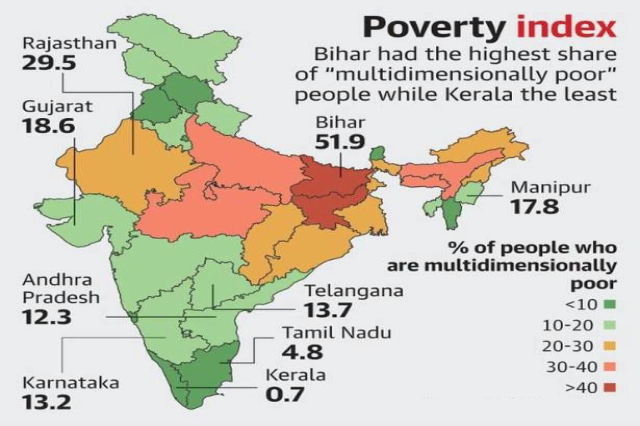Blog
Poverty
Poverty & Hunger in India: Challenges and the Need for Action

Poverty and hunger remain two of the most pressing issues in India, affecting millions of people, especially children and marginalized communities. Despite economic growth and government interventions, a significant portion of the population still struggles to afford basic necessities like food and clean drinking water.
The Current State of Poverty and Hunger in India
India has made progress in reducing poverty, but challenges persist. Here are some eye-opening statistics:
Over 230 million Indians live in poverty (NITI Aayog, 2023).
India ranks 111th out of 125 countries in the Global Hunger Index (GHI, 2023).
33 lakh children in India are malnourished, with 17.7 lakh suffering from severe acute malnutrition (MWCD, 2022).
These figures highlight the urgent need for sustainable solutions to eradicate hunger and lift millions out of poverty.
Major Causes of Poverty and Hunger in India
1. Unemployment and Low Wages
Many families in India depend on daily wage labor, which provides inconsistent and insufficient income. Economic disparities leave millions struggling to afford proper meals.
2. Rising Food Prices and Inflation
Inflation and increasing food prices make it difficult for lower-income families to afford nutritious meals, leading to malnutrition and food insecurity.
3. Lack of Access to Clean Water and Sanitation
Limited access to clean drinking water and sanitation facilities worsens health conditions, making malnourished individuals more vulnerable to diseases.
4. Poor Agricultural Productivity
Many farmers face challenges such as inadequate irrigation, outdated farming techniques, and climate change impacts, affecting food supply and rural livelihoods.
5. Gender and Social Inequality
Women and marginalized communities often face discrimination in employment and resource distribution, making it harder for them to break free from poverty.
Steps to Reduce Poverty and Hunger in India
Addressing these challenges requires a multi-pronged approach involving government policies, private sector involvement, and community participation.
1. Strengthening Social Welfare Programs
Expanding and effectively implementing schemes like the Public Distribution System (PDS), Mid-Day Meal Scheme, and Mahatma Gandhi National Rural Employment Guarantee Act (MGNREGA) can provide food security and employment opportunities.
2. Promoting Sustainable Agriculture
Investing in modern agricultural practices, better irrigation, and farmer support programs can enhance food production and boost rural incomes.
3. Increasing Employment Opportunities
Encouraging skill development and entrepreneurship among the youth can create more job opportunities and reduce income disparities.
4. Ensuring Better Access to Healthcare and Nutrition
Providing free healthcare, nutritional supplements, and awareness programs can combat malnutrition and improve overall well-being.
5. Enhancing Women Empowerment Programs
Educating and economically empowering women can lead to better family planning, improved child nutrition, and a decrease in poverty levels.
How You Can Make a Difference
At Tishya Foundation, we are dedicated to fighting hunger and poverty by providing food, clean drinking water, and livelihood support to underprivileged communities. With your help, we can:
Distribute nutritious meals to those in need
Provide clean drinking water and sanitation facilities
Support skill development programs for sustainable income
Join us in making a difference! Donate, volunteer, or spread awareness to ensure that every individual has access to food, water, and a better future.
#EndHunger #FightPoverty #TishyaFoundation


